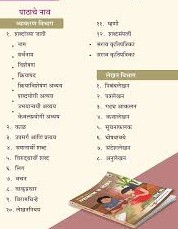Chapter 3: "Learning Simple Marathi Language Grammar" : How it Boosts Your Language Proficiency?

Abstract: Learning the basics of Marathi grammar is a great way to start your journey with the language. Here's a look at some key aspects: 1. Sentence structure Marathi primarily follows an SOV (Subject-Object-Verb) word order, unlike English (SVO). Simple sentences include a subject, object, and verb. 2. Genders Marathi has three genders: masculine, feminine, and neuter. Verbs and adjectives must agree with the noun's gender and number. 3. Verbs and tenses Marathi verbs change based on the subject's gender and number. Verbs in the dictionary form end in "-णे [-ṇe]". Marathi uses simple past, present, and future tenses. The simple present is formed by adding '-तो' (to) for masculine and '-ते' (te) for feminine to the verb root. The simple past generally adds 'लं' or 'ले' (laņ or le), and the simple future adds 'ईन' or 'तील' (īn or tīl) to the verb root. 4. Pronouns Marathi pronouns vary based on ...